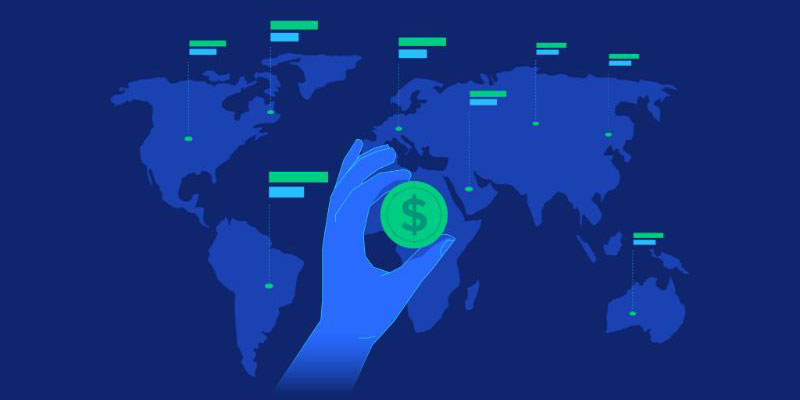The concept of SWF, also known as sovereign wealth funds, has gained substantial interest as more nations have begun to establish such funds and spend on well-known businesses and assets, although with varying degrees of transparency. Due to this, there is now considerable worry over the impact these investments have on the economy of the whole world.
Sovereign Wealth Funds
The term SWF refers to a government-owned investment portfolio. The excess in a country's budget is usually where the funds arrive. Instead of leaving its riches in the central bank or injecting it directly into the economy, a country with a surplus of funds may choose to utilize it through a sovereign wealth fund.
Different nations set up their sovereign wealth funds for various reasons. To safeguard its surplus resources from petroleum risk, UAE invests a percentage of its wealth in an SWF.
History of Sovereign Wealth Funds
During the 1950s, these funds were first established as a remedy for a country with a large surplus in its national budget. The Investment Agency of Kuwait was the world's inaugural sovereign wealth fund. It was founded in 1953 to invest excess income from oil sales. Kiribati did not wait any longer before establishing a fund to keep its income reserves.
The scope and prevalence of sovereign wealth funds have grown substantially during the past few decades. SWF Report estimated that by 2020, approximately 90+ sovereign wealth funds would have total assets of about $8.2 trillion.
Where Can SWF be Invested?

The majority of SWFs are long-term and low-risk investors. While few disclose their complete holdings, sovereign wealth funds can be found investing in the following:
- Government bonds Securities
- Investments from overseas directly
Despite this, an increasing amount is being allocated to "different securities" like hedge funds and private capital, which are out of the reach of the average investor. According to the Global Monetary Market, sovereign wealth funds carry more risk than other investment funds due to their heavy exposure to growing economies, which are notoriously unstable.
Among the many investing methods available to sovereign wealth funds are:
- Specifically, some funds only put money into other companies' stocks or bonds.
- Some people diversify their investments across a wide range of asset categories.
The degree of management involvement varies from fund to fund:
- Some sovereign wealth funds have limitations on the number of shares they will purchase in a firm, either to maintain portfolio diversification or to satisfy internal ethical guidelines.
- Several sovereign wealth funds have a more hands-on strategy, increasing their holdings in individual firms.
Different Categories of Sovereign Wealth Funds

Some different categories of Sovereign Wealth Funds are as follows:
Stabilization Funds
Another name for stabilization funds is the "rainy day" reserves. They are the resources that a government sets aside to protect the country from any economic shocks that may occur. Shocks to the economy are unexpected occurrences that result in significant deviations from average economic development. Among the unanticipated circumstances are the following:
- Unanticipated increases in taxes or reductions in social payments
- A degradation in the ability of the banking system to lend money or issue credit might be prompted by an economic meltdown.
- An alarmingly quick rise in the rates of unemployment
- Unanticipated progress in technological development
- A significant increase in the cost of gasoline, oil, and other comparable natural resources
- Political turbulence
Upcoming Generations Fund
A fund that has been established for the benefit of future generations. It is common practice for nations to establish such a fund in preparation for the inevitable rise in demand for healthcare services for the world's aging population. It helps to relieve some of the strain that will be placed on the federal budget in the coming years.
Fund for Investing the Reserves
The resources in a reserve equity fund are held back specifically with the goal of investment, which differentiates it from other forms of sovereign wealth funds. The fundamental objective of the account is to produce income so that it may be invested in activities that have high returns over the long term.
Fund for Retirement Reserves
A fund for the country's retirement system is called pension reserves. This means that the welfare budget isn't solely responsible for pension payments. Not all nations recognize the necessity of a retirement reserve fund. Countries with older populations and declining birth rates are more likely to experience this.
Top Sovereign Wealth Funds
There are a lot of SWFs operating in the world at the moment. The following are examples of top sovereign wealth funds:
Global Government Pension Fund of Norway
Its assets have increased to almost $1 trillion since its inception in 1990. The Norwegian initiative aims to diversify the country's oil revenues into other asset classes. Most of the fund's resources originate from the taxation that various oil businesses pay, especially those interested in acquiring licenses to carry out oil exploration.
Abu Dhabi Investment Council (ADIA)
The ADIA underutilized fund was established in 1976 to deposit the administration's surplus funds in other programs. The fund's balance is about $900 billion, rising by roughly 10% annually when multiplied. In 2017, they bought a 45% ownership part in a commercial New York City building that had an estimated value of $2.3 billion.
China Investment Company Limited
It was established to reinvest some of the nation's foreign currency reserves. It is not known how much of the fund maintains individual assets. Nevertheless, analysts believe that the total value of such help is close to $8 trillion.
Conclusion
Simply, SWF is a country's savings and investment vehicle. Most nations with SWFs have relied on exports of a small number of commodities to subsidize the cost of the facility. The countries of the Middle East are a perfect illustration since they depend on the profits from their oil exports.



